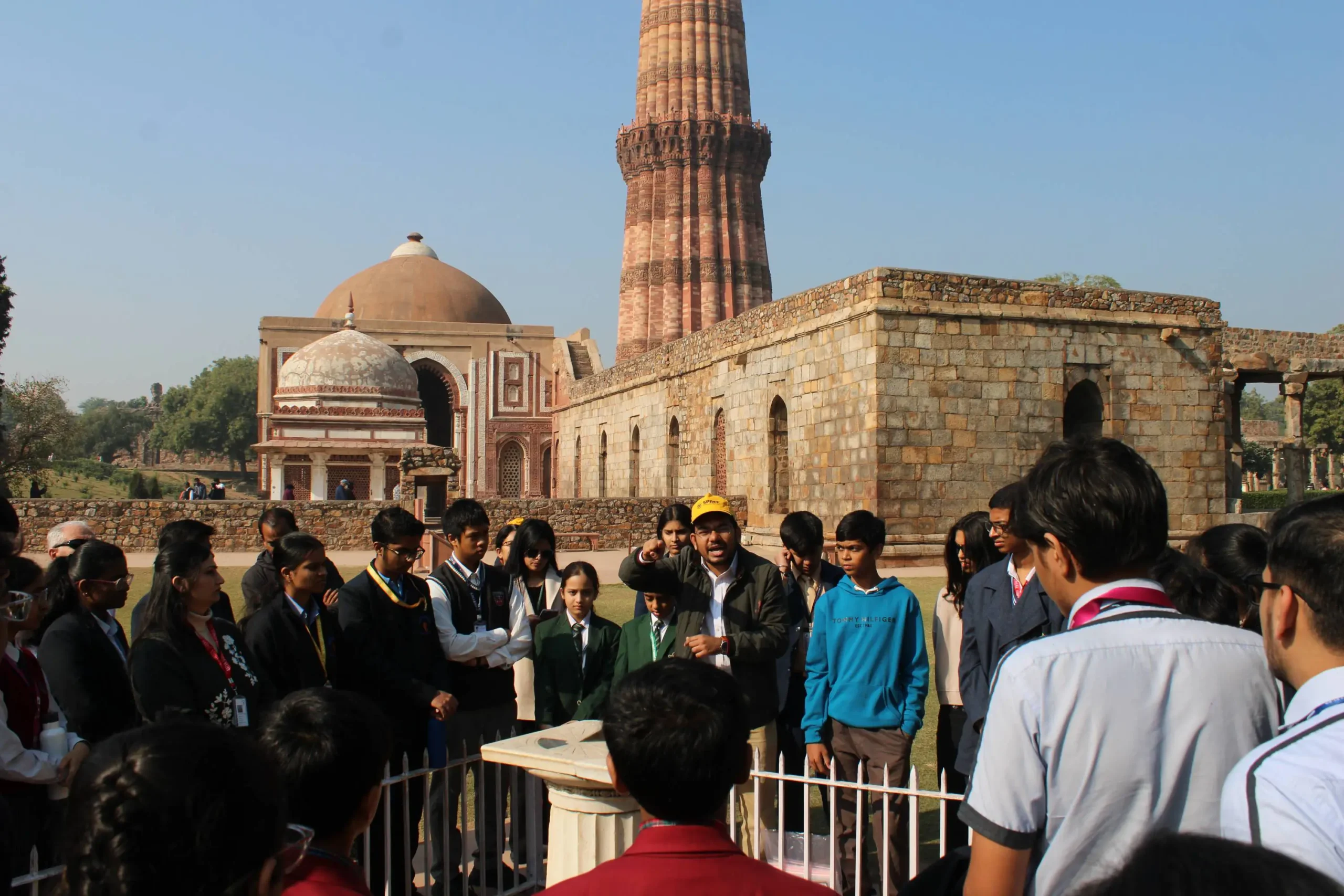Date: 10th December 2024
Venue: Qutub Minar Complex, Delhi
Collaborators: Space India and American Center, New Delhi.
On 10th December 2024, Space India, in collaboration with the American Center and with the support of the Archaeological Survey of India (ASI), hosted a unique and educational workshop titled Measuring Earth with Qutub Minar. This event gave students the chance to recreate the ancient experiment of Eratosthenes, who first measured Earth’s circumference over 2,000 years ago.


Hands-on Science at an Iconic Landmark
The workshop was held at the historic Qutub Minar Complex, where 35 students from prestigious schools such as Darbarilal DAV Model School, Tagore International School, Manav Sthali School, K.R. Mangalam World School, etc. participated.
The focus of the event was to demonstrate how simple tools and careful observation can lead to groundbreaking scientific discoveries. Using the Qutub Minar as a reference point and a Gnomon (a small vertical stick), students were guided through the process of calculating the Earth’s circumference.
Recreating Eratosthenes’ Experiment
Students delved into the science and history of Eratosthenes’ original experiment, where he calculated Earth’s size using shadows cast by the Sun at different locations.
Participants applied this method in two ways:
- Using the Qutub Minar: They measured the shadow of the Minar at noon to determine the angle of the Sun’s elevation.
- Using a Gnomon Rod: A smaller vertical stick replicated the process on a manageable scale, helping students grasp the fundamentals of the experiment.
By combining their measurements with known distances and applying basic trigonometry, students successfully estimated the Earth’s circumference:
- 39,960 km (gnomon method)
- 41,200 km (Qutub Minar method)
Both calculations were remarkably close to the actual pole-to-pole circumference of 40,008 km, showcasing the effectiveness of this ancient approach.


Exploring Ancient Timekeeping: Sundials in Action
Students also explored Sanderson’s Sundial at the Qutub Minar complex. This historical artifact sparked discussions on its significance and how ancient civilizations tracked time using the Sun’s position.
Additionally, participants used their own sundials to calculate the Indian Standard Time (IST), providing hands-on experience in timekeeping methods.
A Blend of Science, History, and Critical Thinking
The workshop wasn’t just a math and science exercise—it was an immersive journey into history and logic. Students learned how ancient scholars like Eratosthenes relied on observation and reasoning to make groundbreaking discoveries, proving that advanced tools aren’t always necessary for impactful science.


Acknowledgments and Gratitude
The success of Measuring Earth with Qutub Minar was made possible by the generous support of the American Center, Delhi, and the facilitation by the Archaeological Survey of India, which granted access to the Qutub Minar complex.
We extend our heartfelt gratitude to all participating schools.

Inspiring Young Minds with Science
At Space India, we are committed to exploring innovative and engaging ways to make science accessible to young minds. This workshop exemplifies how historical methods can inspire modern learning, fostering curiosity and critical thinking in students.

